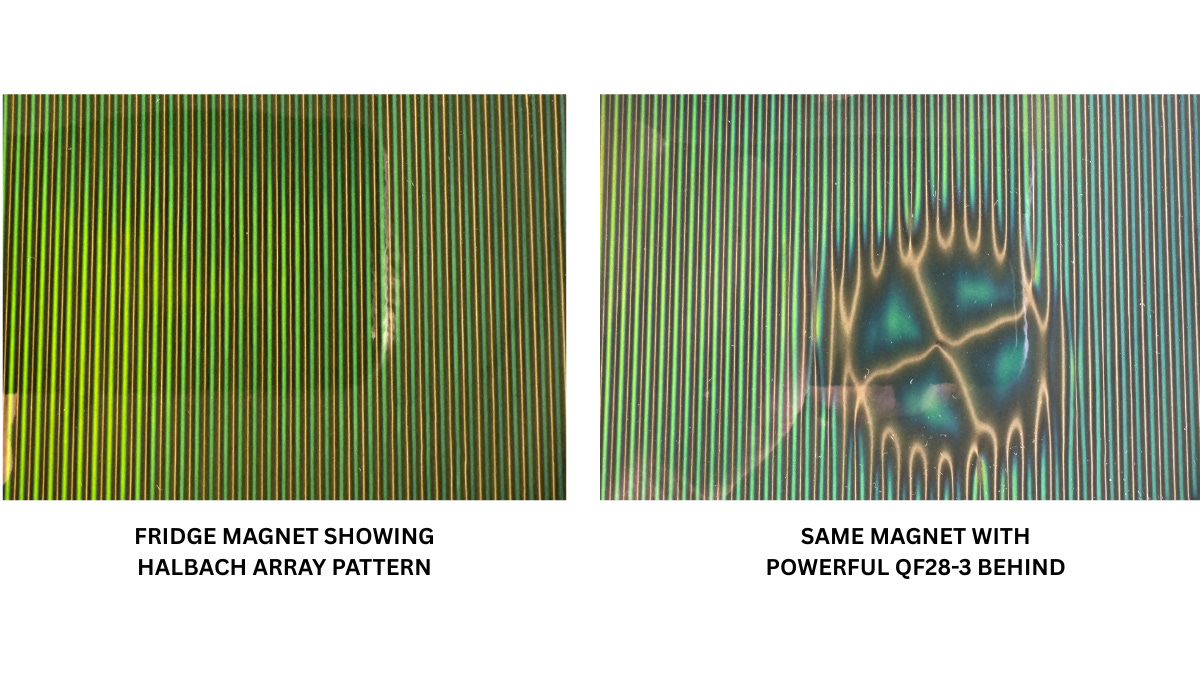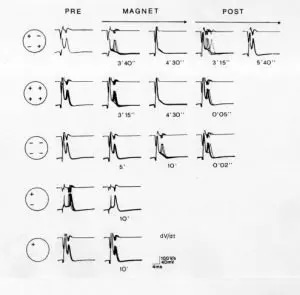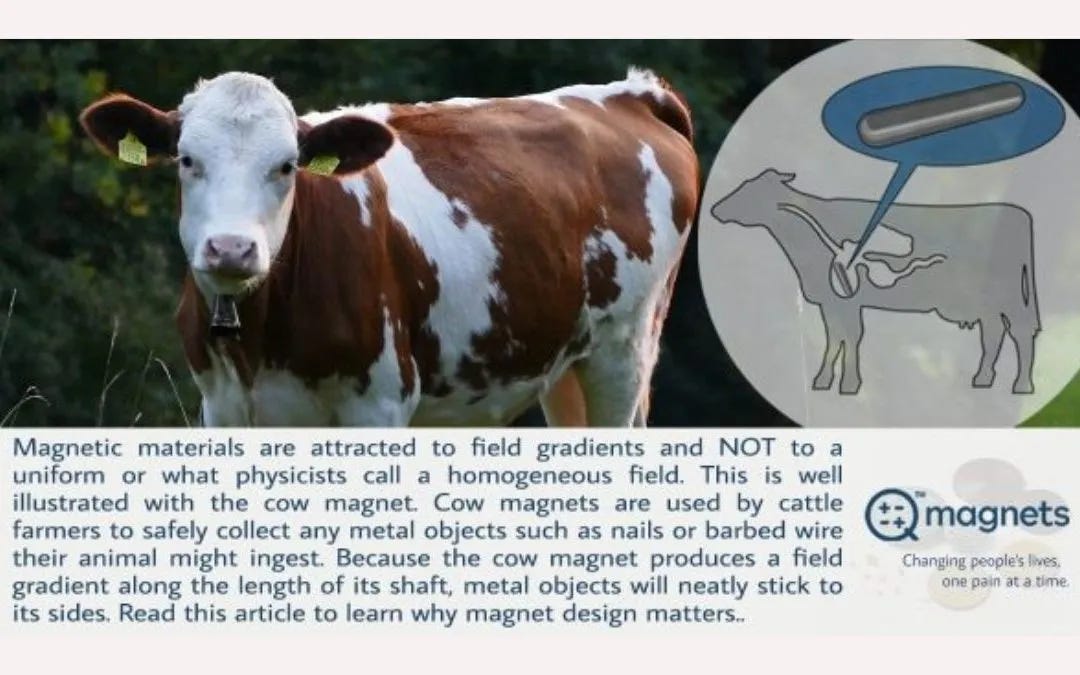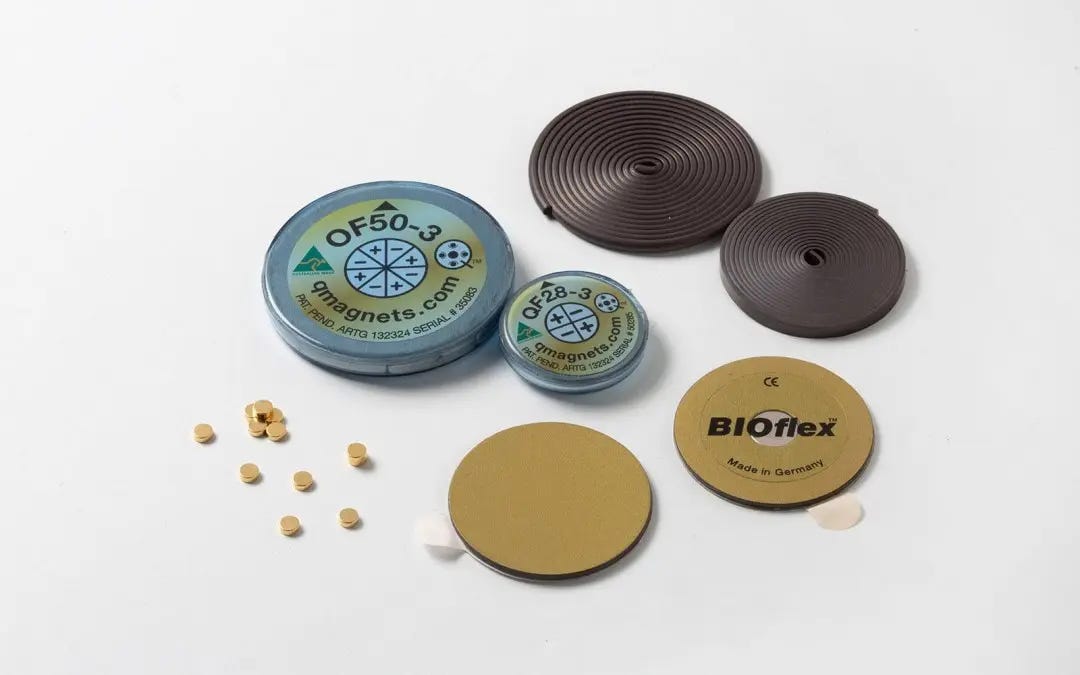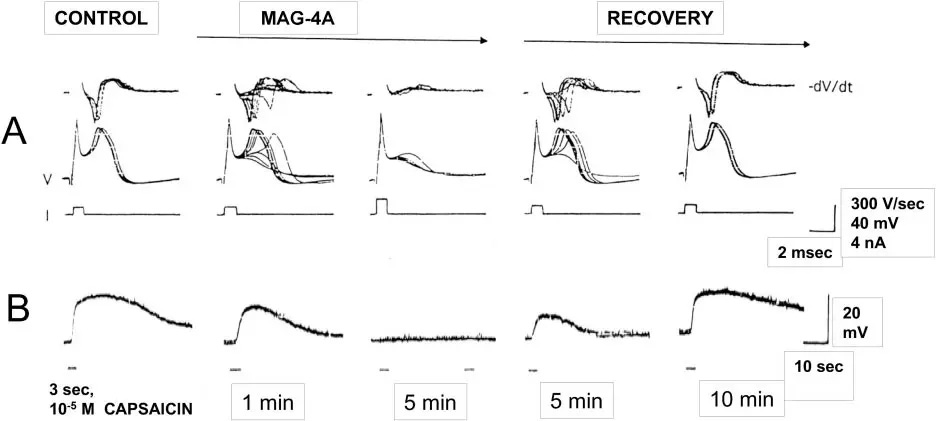Why Q Magnets Can Overpower Your Fridge Magnet
Why does your fridge magnet only stick one way? And what happens if you put it on top of a Q Magnet?
The answer lies in a property of magnets called coercivity (Hc) — a measure of how tough a magnet is to demagnetize. It’s measured in Oersteds (Oe) or A/m.
A flexible rubber fridge magnet might only resist about 1,000 Oe.
A neodymium Q Magnet resists over 12,000 Oe — making it more than 10× tougher against losing its magnetism.
👉 Watch the video demonstration here
In the video, I show how a Q Magnet can actually re-magnetize a flexible rubber magnet. You can try this yourself at home (just don’t use a fridge magnet you want to keep working!).
With a magnetic viewing film, you can “see” the change. Fridge magnets are designed with a Halbach array — a clever pattern that makes the magnet stick only one way. Flip it around, and it won’t work. Expose it to a Q Magnet, and you’ll see how easily it’s altered.
Why This Matters for Therapy
These fun facts have a serious side. The Hc value is the threshold that an external magnetic field must exceed to affect the magnet.
The same principle applies in the body. For a static magnetic field to influence nerve cells or cell membranes, the field strength must exceed a biological threshold. That’s why not all magnets are equal — and why Q Magnets are engineered with the strength and precision needed to create therapeutic effects.
See featured articles below, to dig a little deeper.
Until next time, stay curious and stay well.
James Hermans and the Q Magnets Team



